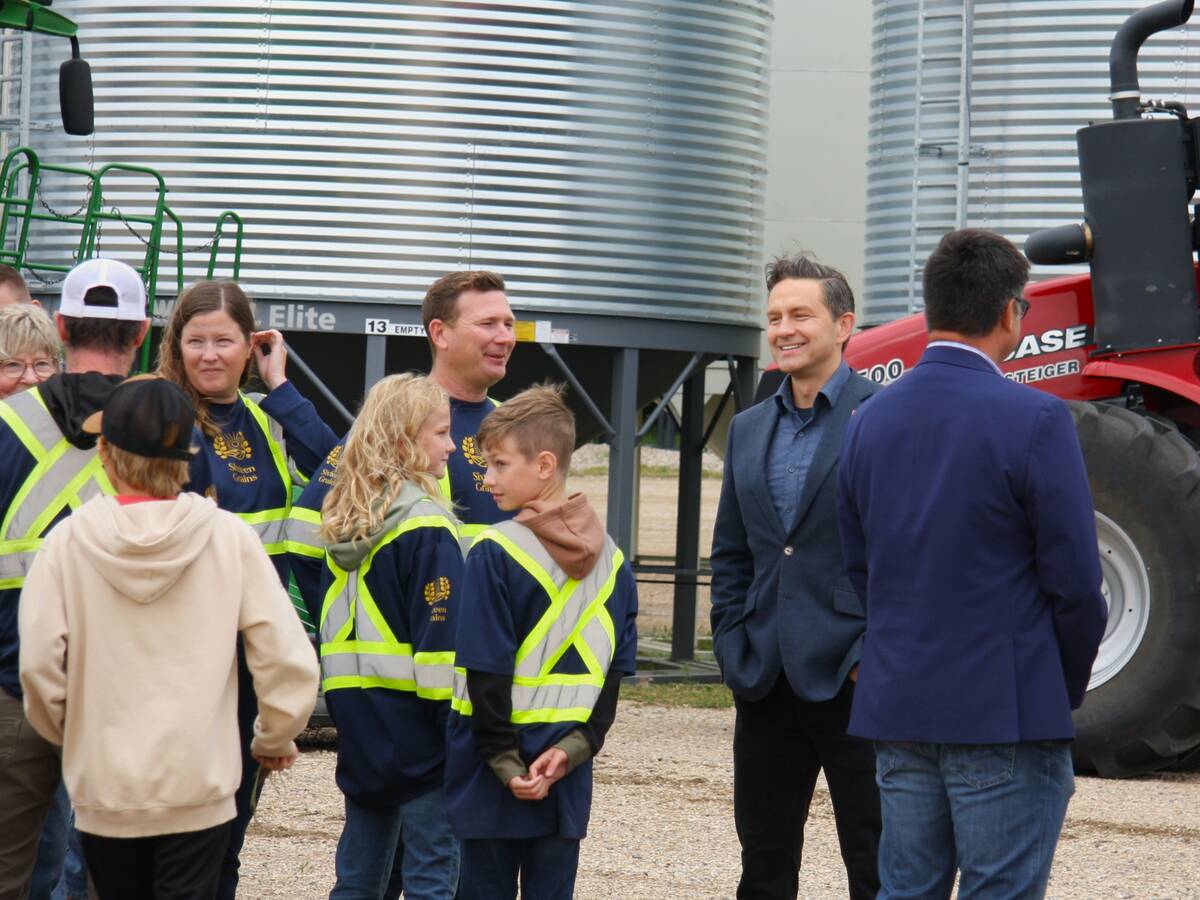The two biggest prairie hog processing companies are investing heavily in their slaughter capacity but analysts say just because they build them, the hogs won’t necessarily come.
Packers in the midwestern United States will compete for Western Canada’s hogs regardless of whether the OlyWest plant goes ahead in Winnipeg, or Maple Leaf’s Mitchell’s in Saskatoon.
“It’s going to be very tough to compete with Iowa on feeding,” said University of Missouri hog industry analyst Ron Plain.
OlyWest proponents aren’t intimidated by the U.S. competition, however. They’ve worked that into their plans and are convinced they can keep weanlings and slaughter hogs in Canada, and build new barns to feed more.
Read Also

Poilievre promises EV action and calls for canola compensation
Conservative leader Pierre Poilievre promises EV action and calls for canola compensation
“It costs a lot to ship market hogs down to the U.S. That just doesn’t make sense for us,” said Florian Possberg of Big Sky Farms of Humboldt, Sask., and an OlyWest investor.
“We really believe that if our industry is to survive long term, we need a mature industry here in Western Canada, which includes finishing capacity and slaughter capacity that is competitive with the Midwest.”
Possberg said he believes economic fundamentals will create a sound basis for OlyWest and for all the other hog packers on the Prairies. He believes feed costs are close to equivalent and that slaughter can be competitive too. If those two assumptions are correct, there is no reason Western Canada won’t keep most of its pigs within the country.
“If we can build world class slaughter facilities here that pay a competitive price with the Midwest, and save freight costs, that’s something that should happen,” said Possberg.
But Plain said offering that competitive pricing might be a big challenge for Canadian packers. Canadian slaughter plants pay higher wages than American plants, making it tough to match American slaughter hog prices.
“The big disadvantage of feeding hogs in Canada is the higher cost of labour in your slaughter plants,” said Plain.
“It costs more to kill and cut up a hog in Canada than it does in the States, therefore your plants have a tougher time outbidding U.S. plants. That’s why not only feeder pigs but also slaughter hogs come down here.”
Indeed, Canada is a rushing river of hogs directed at the U.S. market. Western Canada exports mostly weanlings that will be fed out in the Midwest, but 1.4 million Manitoba slaughter hogs snubbed Canadian packers and went to U.S. plants.
Feeder pig exports to the U.S. have jumped 15 percent this year while slaughter hog exports have increased by two percent. In a recent analysis, George Morris Centre hog industry analyst Kevin Grier concurred with Plain’s analysis that the crucial factor driving hogs south is better slaughter hog prices in the U.S., not feed grain prices.
That may suggest that Canadian packers will have trouble keeping their own hogs home, but Manitoba Pork Council chair Karl Kynoch sees that as exactly the advantage that OlyWest will capitalize upon.
“A lot of the capacity for that plant is going south,” said Kynoch.
“The sow herd is here. Most of the hogs are already here.”
Both he and Possberg admitted that substantial new feeder barn construction will be necessary to supply hogs to keep OlyWest and all the other Canadian packers at full production, but that will follow the market demand.
Possberg said some producers, like his company, will have a vested interest in supplying OlyWest because they will own the plant.
“We know where hogs are going to come from to supply our plant. That’s really key to making these plants work: knowing you can run them at capacity,” said Possberg.
OlyWest has said it wants at least 70 percent of its hogs supplied by producers who invest in the plant, and Possberg said the real rate will probably be higher as more producers join the investment group.
Possberg, who feeds out some of his own hogs in Iowa, said he follows feed grain prices on both sides of the border and knows prices in Saskatchewan and southwestern Manitoba are competitive with Iowa.
The feed cost advantage, which for a while was with the U.S., is changing with biofuel development. Ethanol production is growing so quickly that Iowa, which exported 40 percent of its corn crop in 2004, may soon have to import corn to meet ethanol and hog industry demand.
Possberg said the fundamental purpose of the slaughter expansion is to make the prairie hog industry a viable long-term business.
That’s why big pig production companies like his are investing in OlyWest, and why they’ll be committed suppliers.
“If we intend to be in this business long term and be really sound competitive suppliers of food worldwide, we need to have the whole package here,” said Possberg.















